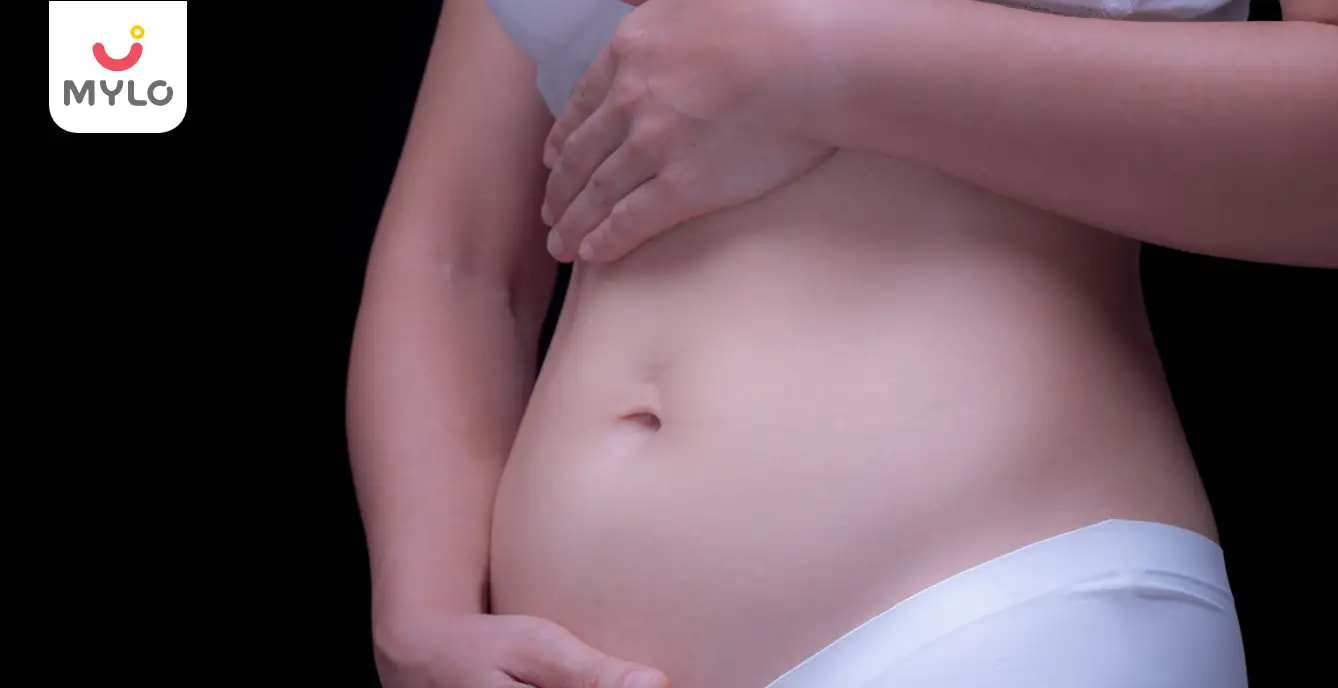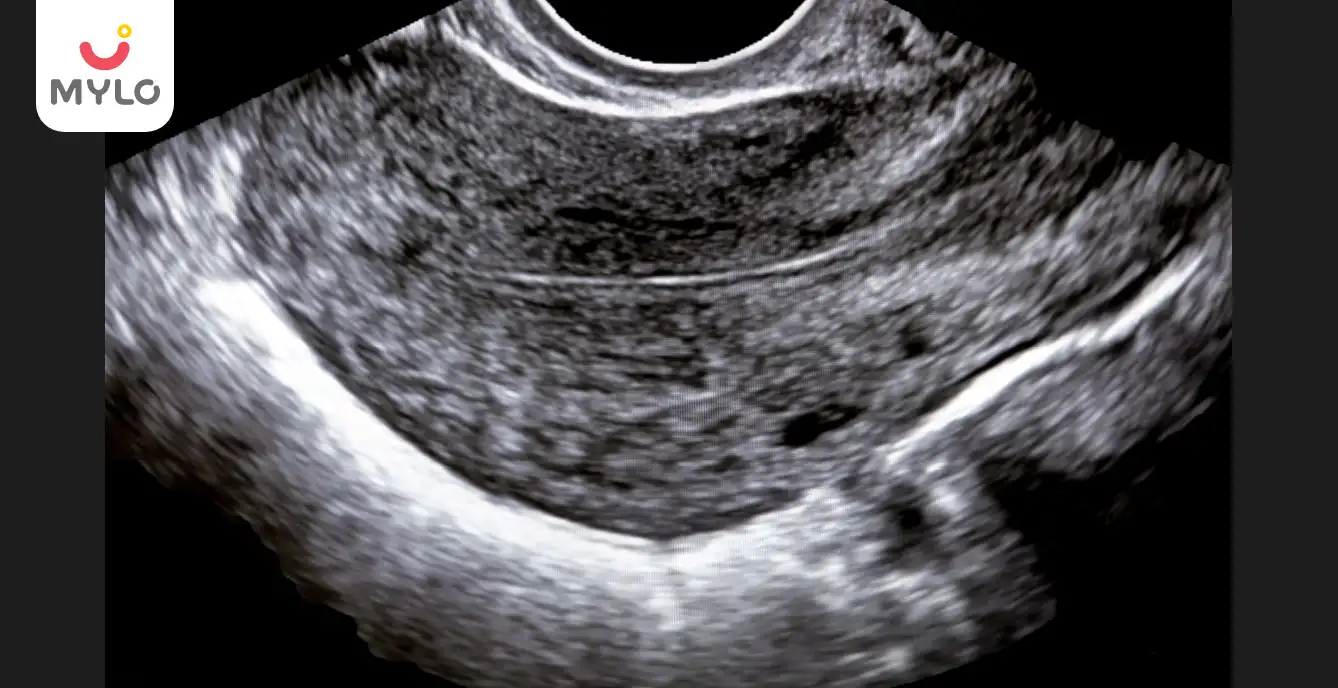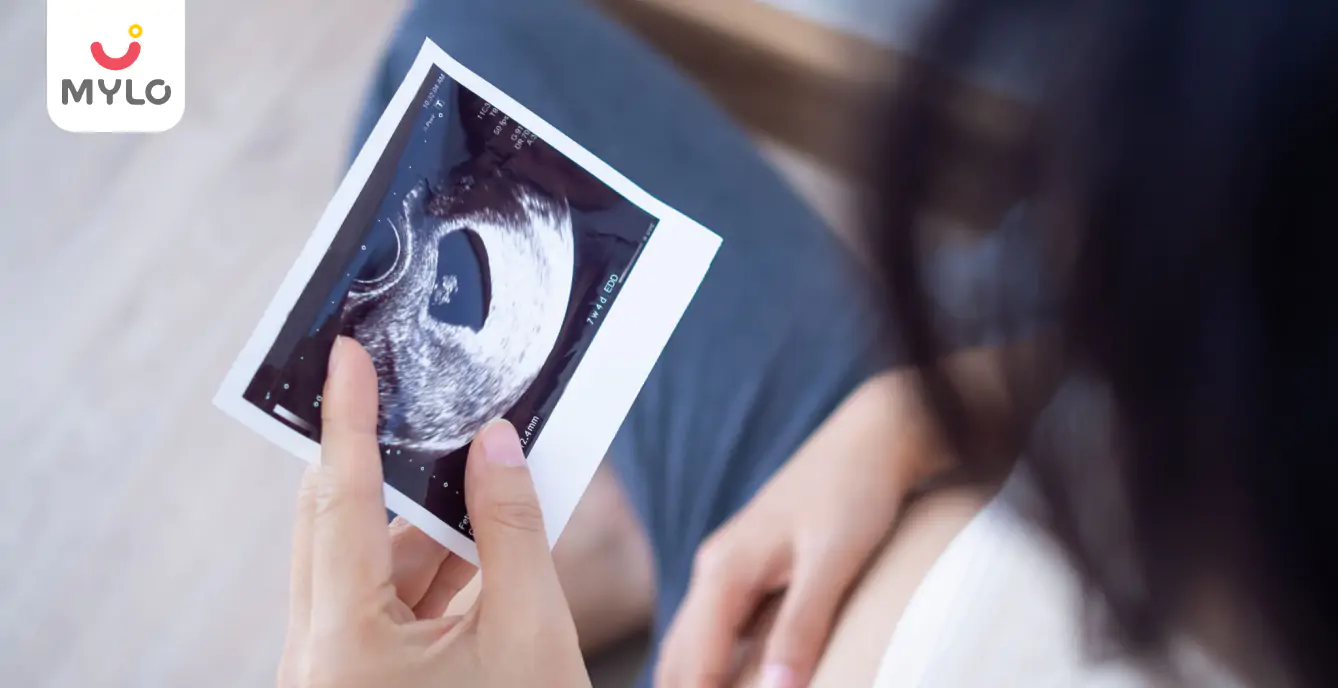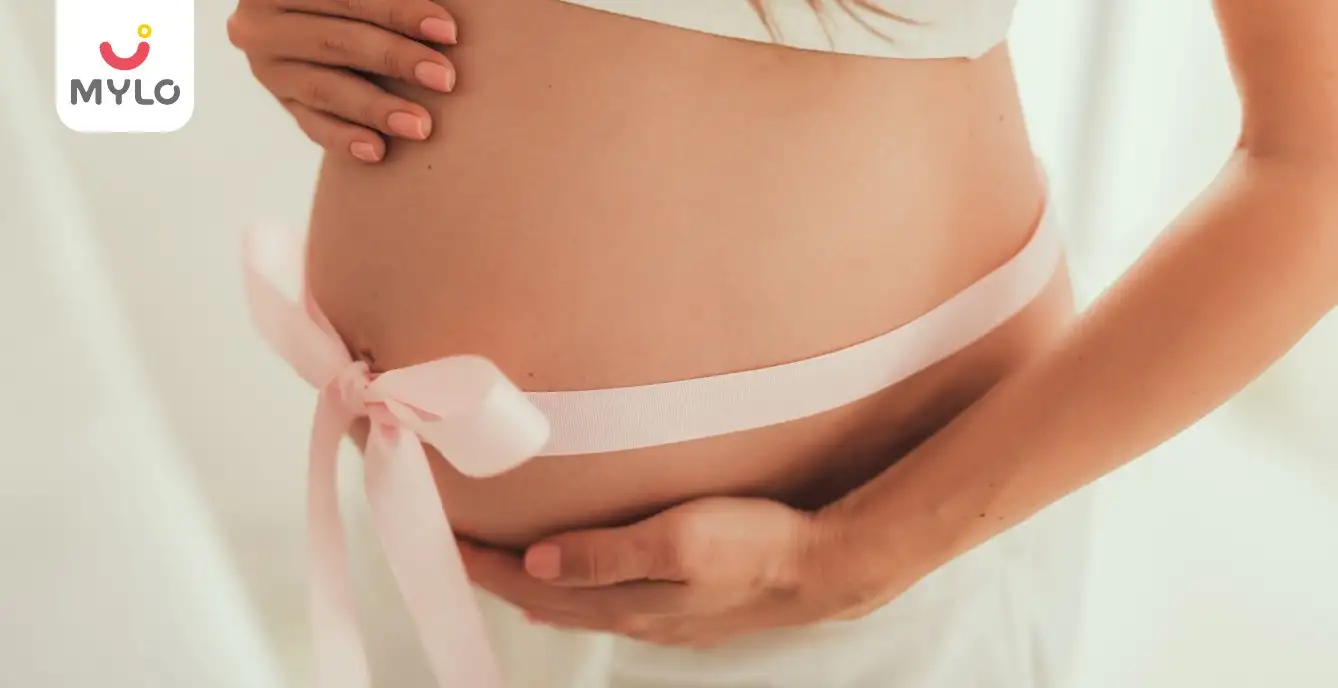Home

Baby Movements

2 Months Pregnant Belly: Understanding Your Belly and Baby's Transformation
In this Article

Baby Movements
2 Months Pregnant Belly: Understanding Your Belly and Baby's Transformation
Updated on 23 October 2023
As you embark on the beautiful journey of pregnancy, your body undergoes a series of remarkable changes, and your 2 months pregnant belly plays a pivotal role in this transformation. At this stage, your little one is just beginning to make their presence felt, and your body is responding with a symphony of alterations.
In this article, we will explore the wondrous changes happening within your belly and the incredible development of your baby. From the tiny, yet significant, details to the broader picture of what's to come, this article will be your guide to understanding the development of your 2 months pregnant baby and the captivating journey that lies ahead.
What does a 2 months pregnant belly feel like?
At two months pregnant, many women may not yet notice significant changes in the size or firmness of their abdominal area. The uterus, which is still relatively small, may not have expanded enough to create a noticeable "baby bump" in most cases. However, some women might begin to experience subtle sensations or changes in their lower abdomen.
You may also like: Your Guide to 2 Months Pregnant Symptoms: What to Expect
Here's what your belly may feel like at this time
1. Bloated or Fullness
Some women report feeling bloated or experiencing a sense of fullness in the lower abdomen. This is often due to hormonal changes and increased blood flow to the pelvic area.
2. Slight Tenderness
The breasts and the lower abdomen may become slightly tender, which can be attributed to hormonal fluctuations and the early stages of pregnancy.
3. Mild Cramping
Some women may experience mild, intermittent cramping as the uterus begins to stretch and grow. This is generally normal and often referred to as "growing pains."
4. Increased Sensitivity
The pelvic region may become more sensitive, and some women may be more aware of sensations in this area as their body prepares for the pregnancy journey.
5. No Visible Bump
In most cases, a noticeable baby bump is not yet present at two months, as the 2 months pregnant baby size is still quite small. Any changes in the abdominal area are usually subtle and more internal than external.
It's important to remember that every pregnancy is unique, and the sensations and changes experienced can vary from woman to woman. If you have concerns about any discomfort or unusual sensations in your belly, it's advisable to consult with your healthcare provider for reassurance and guidance.
You may also like: Is it Safe to Get an Ultrasound Done During the First Trimester of Your Pregnancy?
What are the factors affecting the appearance of a 2 months pregnant belly?
The appearance of a belly can be influenced by several factors, and it's important to note that these factors can vary from woman to woman. Here are seven key factors that affect the appearance of a pregnant belly at 2 months:
1. Body Type and Size
A woman's body type and size can significantly impact the visibility of a pregnant belly. Women with a smaller frame and less body fat may notice changes more quickly than those with a larger frame.
2. Number of Pregnancies
In subsequent pregnancies, some women may show earlier due to muscle and tissue changes in the abdominal area, whereas first-time mothers may show a little later.
3. Muscle Tone
The strength and tone of a woman's abdominal muscles can affect the appearance of her pregnant belly. Strong abdominal muscles can provide more support and may result in a less noticeable bump early in pregnancy.
4. Bloating
Hormonal changes and increased gas during pregnancy can lead to bloating, which can make the abdominal area appear larger and more rounded.
5. Uterine Position
The position and tilt of the uterus can vary among women. A retroverted (tilted backward) uterus may not create a noticeable bump as early as an anteverted (tilted forward) uterus.
6. Genetics
Genetic factors play a role in determining how a pregnant belly appears. Some women may have genetics that predispose them to showing earlier or later during pregnancy.
You may also like: Stages of Pregnancy by Trimester
What’s the normal 2 months pregnant baby size?
At two months of pregnancy, which is approximately eight weeks from the first day of your last menstrual period, the size of the developing baby is still quite small. Typically, the embryo at this stage measures about 1/2 to 3/4 of an inch in length (around 1.27 to 1.9 centimeters). This measurement is roughly the size of a raspberry or a small grape.
It's important to note that while the embryo is tiny, it is rapidly growing and developing during this time, and many crucial organs and body systems are forming. By the end of the second month of pregnancy, the baby will have developed basic facial features, a heartbeat, limb buds, and many other essential structures.
You may also like: Fetal Growth and Development During Pregnancy
Growth and development of a 2 months pregnant baby
At two months of pregnancy, your baby is undergoing the following growth and development inside your womb:
1. Organ Formation
During the second month, many critical organ systems begin to form, including the heart, brain, spinal cord, and digestive system. The heart typically starts beating during this period.
2. Facial Features
Facial features such as the eyes, nose, and ears begin to take shape. The baby's face may also develop small dimples where the cheeks will form.
3. Limb Development
Limb buds, which will eventually become the arms and legs, start to emerge. These buds initially resemble paddles.
4. Umbilical Cord
The umbilical cord, which connects the baby to the placenta and provides essential nutrients and oxygen, begins to form.
5. Sexual Development
Although it may not be visually apparent, the baby's sexual organs are developing during this time. Gender can typically be determined later in the pregnancy.
6. Movement
While the baby is too small for the mother to feel movement during the second month, early reflexes and involuntary muscle movements can begin.
7. Amniotic Fluid
The amniotic sac, filled with amniotic fluid, surrounds and protects the developing embryo. This fluid provides buoyancy and acts as a cushion.
It's important to note that the second month of pregnancy is a crucial period for fetal development. Many of the baby's vital structures and organs are rapidly taking shape, setting the stage for further growth and maturation throughout the pregnancy.
Final Thoughts
In conclusion, the journey of pregnancy is an incredible chapter in the book of life, and your 2 months pregnant belly is the beginning of a captivating tale. From the formation of tiny features to the development of vital organs, your baby is already on an extraordinary path of growth. So, cherish each day, each flutter, and each milestone!
References
1. Pascual ZN, Langaker MD. Physiology, Pregnancy. (2023). In: StatPearls [Internet]. Treasure Island (FL): StatPearls Publishing
2. Soma-Pillay P, Nelson-Piercy C, Tolppanen H, Mebazaa A. (2016). Physiological changes in pregnancy. Cardiovasc J Afr.



Written by
Anupama Chadha
Anupama Chadha, born and raised in Delhi is a content writer who has written extensively for industries such as HR, Healthcare, Finance, Retail and Tech.
Read MoreGet baby's diet chart, and growth tips

Related Articles
Related Questions
Influenza and boostrix injection kisiko laga hai kya 8 month pregnancy me and q lagta hai ye plz reply me

Hai.... My last period was in feb 24. I tested in 40 th day morning 3:30 .. That is faint line .. I conculed mylo thz app also.... And I asked tha dr wait for 3 to 5 days ... Im also waiting ... Then I test today 4:15 test is sooooo faint ... And I feel in ma body no pregnancy symptoms. What can I do .

Baby kicks KB Marta hai Plz tell mi

PCOD kya hota hai

How to detect pcos

Related Topics
RECENTLY PUBLISHED ARTICLES
our most recent articles

Conception
The Significance of Trilaminar Endometrium in Fertility: What You Need to Know

Herbal Medicines
Kanchanar Guggulu: Your Ultimate Guide to a Healthy Lifestyle

First Trimester
First Trimester of Pregnancy

TV & OTT
Top 10 Comedy Movies on Hotstar to Make You Laugh Your Heart Out

Pregnancy Journey
Stages of Pregnancy by Trimester

TV & OTT
Your Streaming Guide to the Best Web Series on Hotstar in Hindi
- Top Romantic Movies on Hotstar That'll Melt Your Heart
- When to Have Another Child: Timing and Tips
- Top 10 Benefits of Triphala: Discover the Hidden Health Secrets
- Ayurvedic Medicine for Irregular Periods: Discovering Ancient Remedies for Hormonal Harmony
- The Link Between Missed Period and White Discharge
- Vata Pitta Kapha: The Ultimate Guide to Discovering Your Ayurvedic Constitution
- Top 10 Romantic Web Series on Hotstar You Must Watch
- Back Pain During Period: Understanding the Causes and Solutions
- Pain After Sex: The Ultimate Guide to Understanding Causes and Finding Relief
- Coffee in Periods: Debunking the Myths and Understanding the Facts
- Postmenopausal Bleeding: Symptoms, Causes & Treatment
- Hormone Replacement Therapy (HRT) : Type, Side Effects & Treatment
- Dolo 650 During Breastfeeding: Expert Advice and Guidelines for Nursing Mothers
- Arogyavardhini Vati: How This Herbal Blend Can Help You Balance Your Three Doshas


AWARDS AND RECOGNITION

Mylo wins Forbes D2C Disruptor award

Mylo wins The Economic Times Promising Brands 2022
AS SEEN IN
















- Mylo Care: Effective and science-backed personal care and wellness solutions for a joyful you.
- Mylo Baby: Science-backed, gentle and effective personal care & hygiene range for your little one.
- Mylo Community: Trusted and empathetic community of 10mn+ parents and experts.
Product Categories
baby carrier | baby soap | baby wipes | stretch marks cream | baby cream | baby shampoo | baby massage oil | baby hair oil | stretch marks oil | baby body wash | baby powder | baby lotion | diaper rash cream | newborn diapers | teether | baby kajal | baby diapers | cloth diapers |








